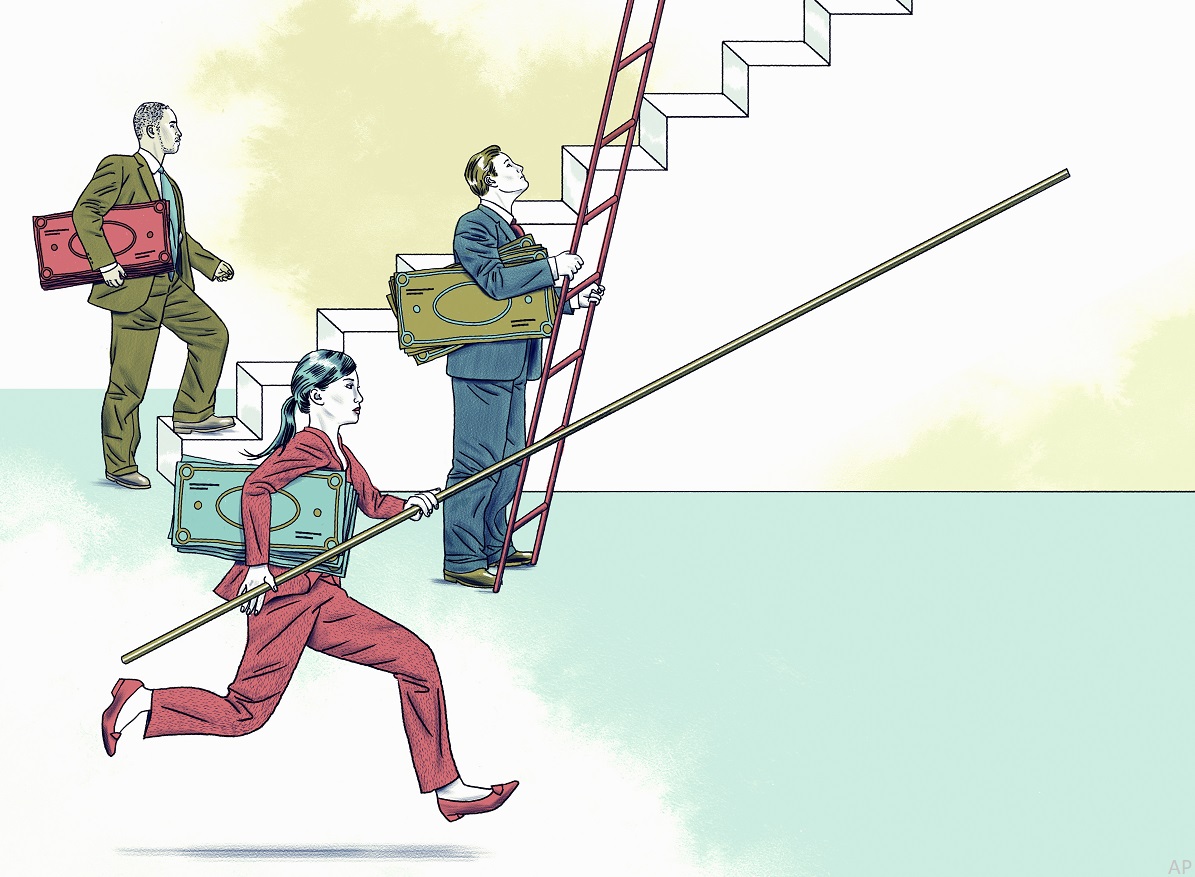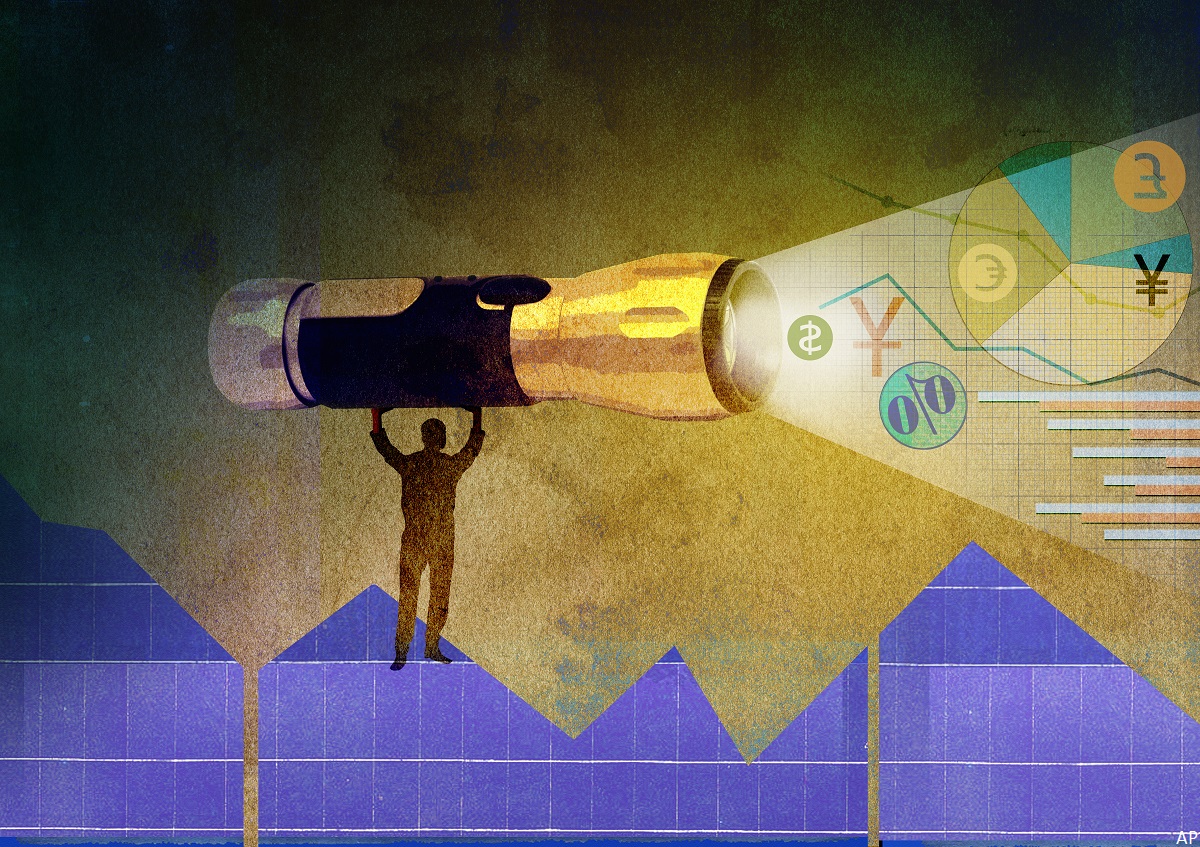
The news regarding stubbornly high inflation and continuous central bank tightening, as well as the seemingly endless conflict between Russia and Ukraine, and fears of a global recession, are genuine worries that show no relief in sight.
Drummond Brodeur, lead manager of the 5-star neutral-rated $8.8 billion CI Global Income & Growth F, cautions that we are amid a drawn-out process that requires greater patience and stamina on behalf of investors.
“The markets haven’t priced in all the bad news. We’re in the process of doing that,” says Brodeur, senior vice-president and global strategist at Toronto-based CI Global Asset Management. “Finding the bottom is more of a process than a point in time. That’s what we are going through now. The developments that we have seen are very much a part of the process. If I look across asset classes, I do think the rates market has genuinely priced in most of the developments that are unfolding. U.S. 10-year treasury bonds are up to 3.55% and are pricing in a 4%-4.5% terminal rate. We are getting to the point where the rates market has priced in the message that the Federal Reserve is trying to deliver.”
Finding the Bottom
A host of events have buffeted markets, but Brodeur says the overriding issue is inflation and how it is affecting monetary policy. “The fact that inflation has remained significantly higher than anticipated, has forced a dramatic change in monetary policy and importantly, the monetary policy reaction function. Central banks have changed how they are looking at inflation,” says Brodeur, a 33-year industry veteran and Montreal native who joined CI in 2007, after earning two Masters degrees in economics from Melbourne’s Monash University and working as an Asian specialist for the CN Pension Plan, “The global economy has been hit with one massive shock after another over the past few years and has been reeling from those shocks.”
Year-to-date (Sept. 27), CI Global Income and Growth F has returned -14.95%, versus -14.81% for the Global Neutral Balanced category. Over five and 10 years, the fund was a first quartile performer and returned an annualized 5.63% and 8.08%. In contrast, the category returned an annualized 2.45% and 4.65% for the corresponding periods. The fund is also available as CI Global Asset Allocation Private Pool ETF (CGAA), although it is slightly more concentrated than the mutual fund and has a lower management expense ratio.
While inflation was higher than anyone anticipated in the first half, Brodeur says the reality changed in June. “Before then central bankers were willing to be more patient and allow inflation factors to roll off. That all changed in June when they said inflation was Enemy Number One and said, ‘we have to kill inflation now.’ It was a dramatic shift. The Fed, the Bank of Canada and the Bank of England were all reading from the same playbook: inflation is at the highest levels in decades, and unemployment at the lowest levels, a classic definition of an over-heated economy. They said, ‘Our job is to deliver price stability and we can do that,’” says Brodeur, who has been involved in managing CI Global Income & Growth since he joined CI in 2007. Brodeur works within a team that includes vice-president John Shaw and senior vice-president Geof Marshall, on the fixed income side, and Matthew Strauss, senior vice-president, on the equity side.
Fed Not Giving up the Fight
Part of the central banks’ rationale, Brodeur notes, is that they recognized a pattern similar to what happened in the 1960s and 1970s when high inflation prompted labour unions to demand cost-of-living adjustments. “The other lesson from the seventies is that ‘we have to keep it up until the job is done.’ In the so-called Volcker era, when they took rates up to the high teens, that’s not when the problems started. That’s when it ended,” says Brodeur, noting that central banks assumed inflation was vanquished in the 1960s and early 1970s and eased monetary policy too soon. “For the first time in over 30 years, we have a central bank that is really fighting inflation. That’s a radical departure for markets because for the past 30 years the problem has been deflation, not inflation.”
Given that central banks are determined to achieve their goal, Brodeur reminds investors of that well-worn mantra: Don’t fight the Fed. “It’s a showdown with the Fed versus the markets. The Fed needs to talk with conviction until inflation is clearly beaten and there is a definitive break. There is a glimmer of hope as we go into the four quarter and then the first quarter of 2023. There are two possible scenarios that we are reaching the bottom. Both will cause the Fed to back off from the higher-for-longer backdrop. One is that, as we move into a recession far deeper than expected, the Fed will be forced to look at economic growth and risks of unemployment,” says Brodeur. The second scenario involves inflation easing off and the Fed says its target of 2% is being reached sooner than expected.
Could Get Worse Before It Gets Better
Brodeur’s base case is that eventually, we will return to a low-growth disinflationary environment and the trends that existed before COVID come along. “But I don’t how long it will take to get there. The uncertainty is the timeline. That is the challenging part, because as long as rates stay this high, the more the economic impact will be. Monetary policy works as a lag. The more the Fed has to do, the more we have to be concerned about a deeper downturn in 2023. This is a time to be cautious, but not necessarily fearful.”
From a strategic viewpoint, the CI team is running a portfolio with 56.9% equities, 37.5% fixed income and 5.6% cash. “We’re cautious-defensive, but not fearful. A neutral equity weighting is 60% and this time last year we were around 66% equities,” says Brodeur. “We took it down coming into 2022. The volatility this year was not unexpected. The magnitude was. In December we decided it was time to get more neutral and defensively positioned,” says Brodeur, noting that the team-based fund is dependent on an active asset allocation approach. The team has also used a bottom-up approach to weed out the weaker equity and fixed income components and focus on better quality names that can ride out the turbulence.
A-Grade Bonds Going for B-Grade Prices
On the fixed income side, the managers have allocated 15% of the portfolio to high-yield bonds, plus 16% to sovereign bonds and 6% to investment-grade corporate bonds. By way of example, Brodeur points to institutional preferred shares issued by Canadian banks, such as CIBC, TD and BMO. “They are A-rated institutions that are issuing BBB-rated securities with a BB-rated coupon attached to them,” says Brodeur, noting that the coupons are in the 7.20% range. “They are very attractive securities that are unavailable for retail investors.”
On the equity side, the managers are emphasizing U.S. stocks, which account for 36.38% of the portfolio, versus international names which account for only 16.11% of the fund, and Canada which accounts for 4.54% of the fund. “We allocate by sector, as opposed to geography. The bottom-up security selection comes from our sector portfolio managers. That dictates the geographic allocation in the fund.” Currently, financial services is the largest sector, at 18.39%, followed by technology at 15.75%, healthcare at 13.76% and consumer cyclicals and consumer defensives, both at 9.99%.
Top Stock Picks
Focusing on about 100 companies that have strong cash flows, visible earnings and inflation protection, Brodeur says the equity team is style-agnostic and has trimmed some holdings that were deemed weak in the current environment. The fund owns such household names as Diageo PLC (DGE) Shell PLC (SHEL) and Nestle SA (NESN) that are global franchises. One top holding, says Brodeur, is Samsonite International SA (01910), a Hong Kong-listed maker of suitcases and briefcases that is registered in Luxembourg. “It is benefitting from the re-opening trend that we had anticipated coming into this year. It has a reasonable valuation and is trading at about 20 times this year’s expected earnings. But if you look forward to 2023 and 2024, it’s trading at about 12 times. We expect 20% earnings growth.”
Another top holding is Dollar General Corp. (DG), one of the largest chains of discount stores in the U.S. since operates over 18,000 stores in the continental U.S. “With high inflation, consumers have been trading down. Dollar Stores in particular benefits because about 60% of its stores are in rural markets with essentially no competition. The addressable market is still quite sizeable in terms of these small towns.” The current share price value is US$256, but in-house analysts see the fair value approaching US$340 in about three years.









.jpg)













